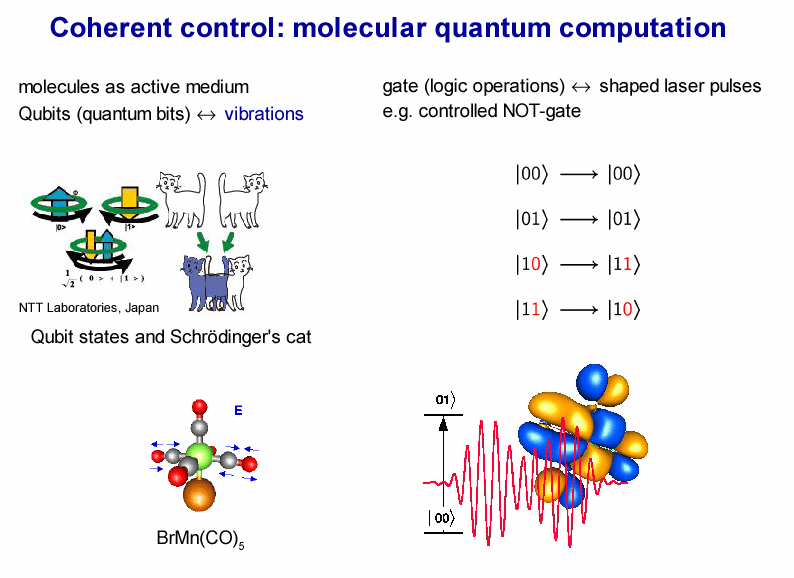As stated last time, the main principle of quantum computing lies in the ability for a simple 2-bit system of up and down to, in fact, represent more than just two bits. For example, a spin state of an electron can be a mixture of its two primary states (for a brief moment in time) and thus this is a new information state, if we can properly query it. This information state is called a Qubit (quantum bit):
 One problem with the idea of quantum computers is that if you try to look at the subatomic particles, you could bump them, and thereby change their value. But in quantum physics, if you apply an outside force to two atoms, it can cause them to become entangled, and the second atom can take on the properties of the first atom. So if left alone, an atom will spin in all directions; but the instant it is disturbed it chooses one spin, or one value; and at the same time, the second entangled atom will choose an opposite spin, or value. In principle, this allows the value of the qubits (quantum bits) to be known without actually "looking" at them. The act of observation (looking at them), would collapse the qubits back into 1's or 0's.  Yes this is bizarre! No, no one really understands this: Yes this is bizarre! No, no one really understands this:
 Because the qubit has so many more states than the bit, massively parallel systems could be built and this would greatly increase the slope of Moore's law.  Ultimately, quantum computing must occur via the manipulation of individual electrons. The superposition of its spin state is the qubit. Since the qubit is a superposition this means that the qubit represents multiple values at one time . As more qubits are strung together, the power of the quantum processor grows exponentially. The electrons can be initialized to some state (say all having spin up) and then subsequent interactions produces many states. While the basic idea is illustrated below, there is large doubt in the physical science world that such a device can ever be actually built>  In addition to the spin states of electrons, molecular vibrations may make a natural quantum computer, as illustrated below:  Carbon nanotube transport of individual electrons may also hold the key to where the qubits will live. 
While all of this sounds cool and confusing, the main technical problem
may be a deep one. By the very nature of quantum mechanics, the interface with the real
world is mysterious. Thus, we may well be able to generate qubits of information but
we may have no way of inspecting them or getting information out of the system in any
intelligible manner.
To be sure, we can make devices that can contain individual electrons in order to generate
the qubits, but its completely unclear whether we would ever obtain coherent output from
such a device. I'm betting no.
|